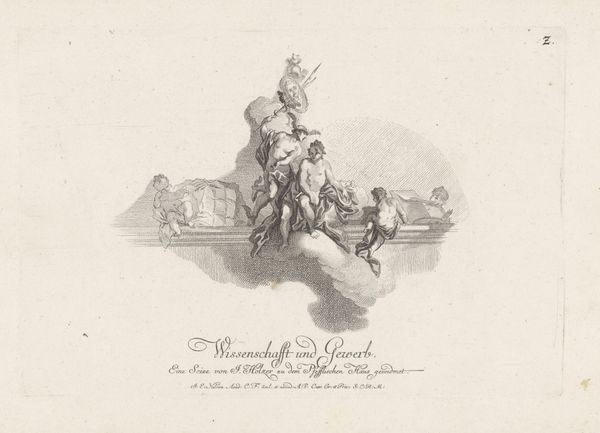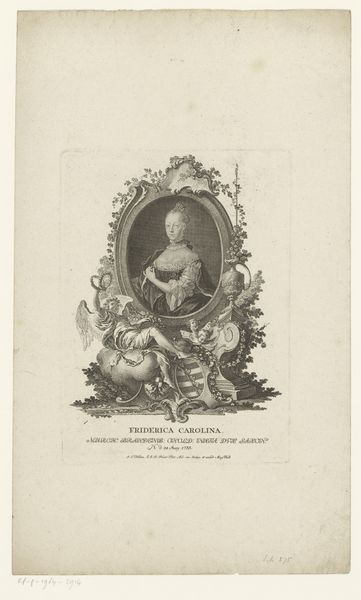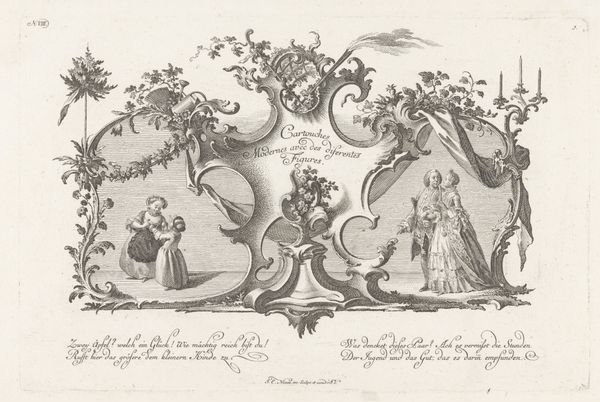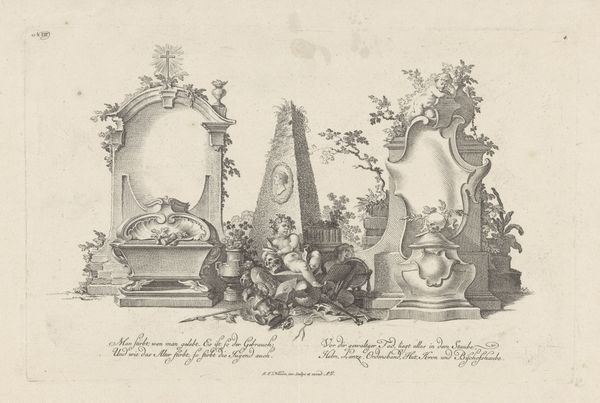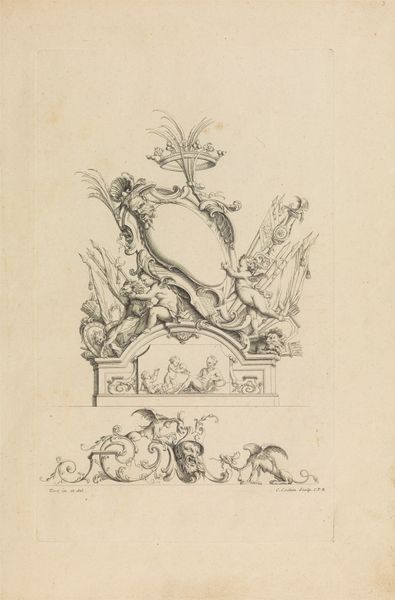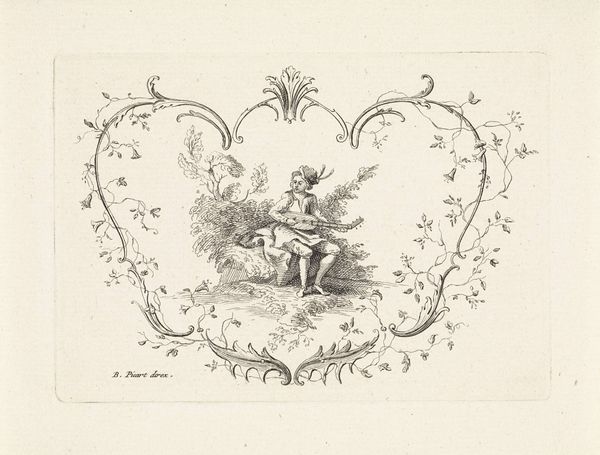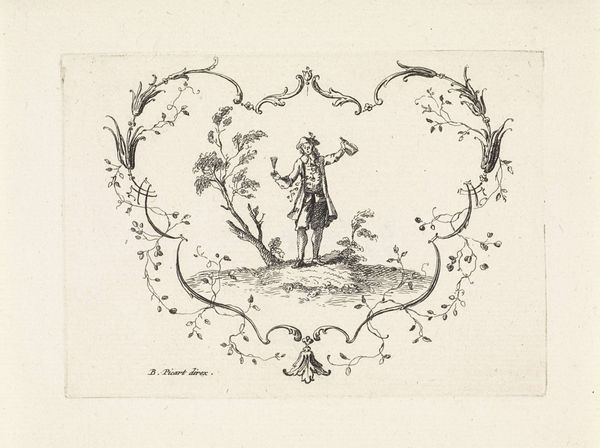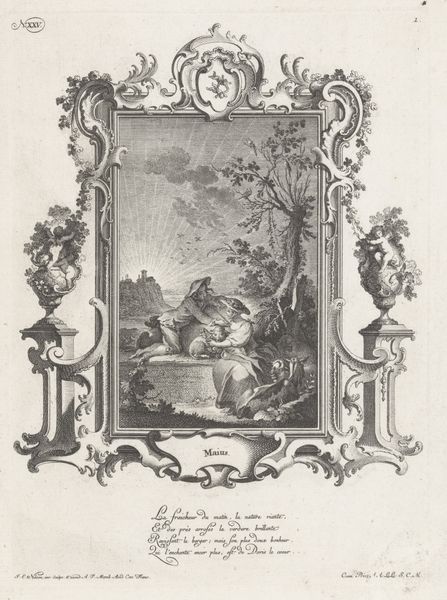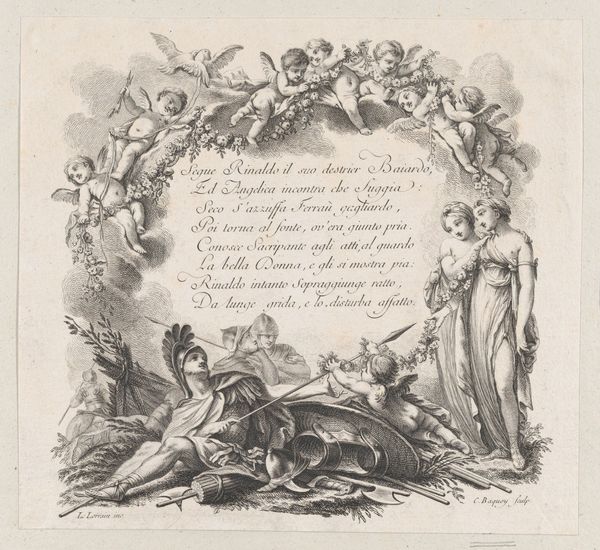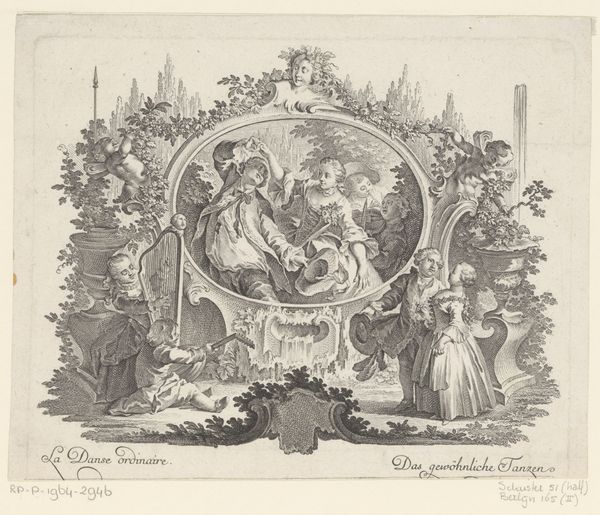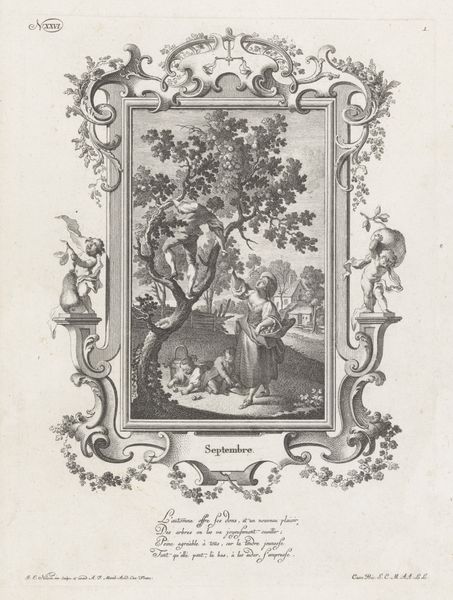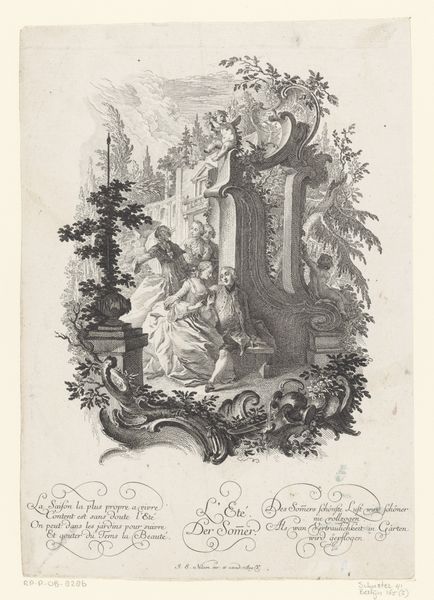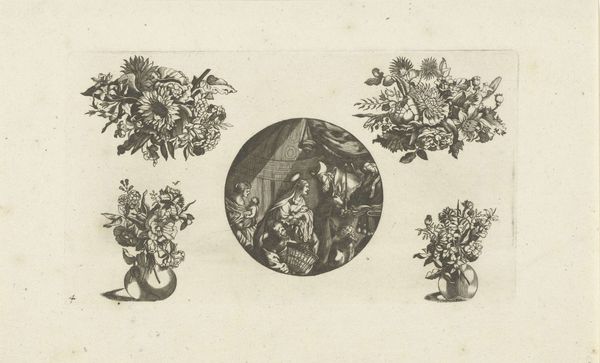
Dimensions: height 166 mm, width 246 mm
Copyright: Rijks Museum: Open Domain
Curator: Here in the Rijksmuseum, we're looking at "Geweld en nijd," or "Violence and Envy," an engraving created by Johann Esaias Nilson around 1765-1770. Editor: It’s chaotic! All those intertwined figures... and the central figure brandishing what looks like a scythe? The composition itself feels violent, reflecting its name I think. Curator: Absolutely. Nilson's baroque style conveys a sense of drama, depicting art personified as a figure suffering. You see violence and envy attacking it, while Time intervenes to rescue it. This fits within a broader understanding of art's role in society and the historical power structures at play. The idea of protecting artistic expression resonates profoundly in our contemporary context, right? Editor: Yes, it makes you wonder about the economics of the artwork at the time. Consider the material process involved—the engraver, the paper, the ink, each playing a crucial role in its dissemination and survival to our present moment. It reflects not only its intrinsic beauty, but the labour, resources, and the societal value ascribed to art. And that, of course, relates directly to contemporary conversations around ownership and access, and whether those considerations even extend to the masses. Curator: I think it raises important questions about who gets to define art and whose voices are valued, that continue to this day. The print is clearly an allegory. I’m seeing some clear intersectional aspects—looking at who has been historically silenced, misrepresented, and actively excluded within these narratives around art and power. The female personification of Art in a patriarchal society, her fragility...It is fascinating when considering the feminist theorists from the past. Editor: Seeing an engraving—so mass-produced relative to a painting, let’s say—suggests art wasn't just for the elite. Its social value lay also in that reproduction and distribution of images. Curator: It certainly adds a layer to our appreciation, considering both the themes portrayed and how accessible art might have been in the 18th century versus how its consumed and regarded now. Thank you. Editor: It certainly underscores how inextricably linked art, labor, and society truly are, and this all extends to its reception across time. Thank you.
Comments
No comments
Be the first to comment and join the conversation on the ultimate creative platform.
